
What is a liminal space?
The landscape architect Sonal Mithal answered this question as she began her laboratory workshop for the Interdisciplinary Laboratory for Art, Nature, and Dance (iLAND), on whose board I serve and I've discussed in a previous post. I didn’t quite hear what she said because I was there to document, not quite within the group though not quite outside, which I gathered had something to do with liminal space itself.
As I came to understand it from my position, a liminal space is one that is neither inside or outside, what one has to pass through to move from one space to another. The dance and food artist Athena Kokoronis demonstrated this by shooting her hand through a hole in the wrought iron gate that separated the “public” space of the park and the fenced in garden area where one is not supposed to tread:
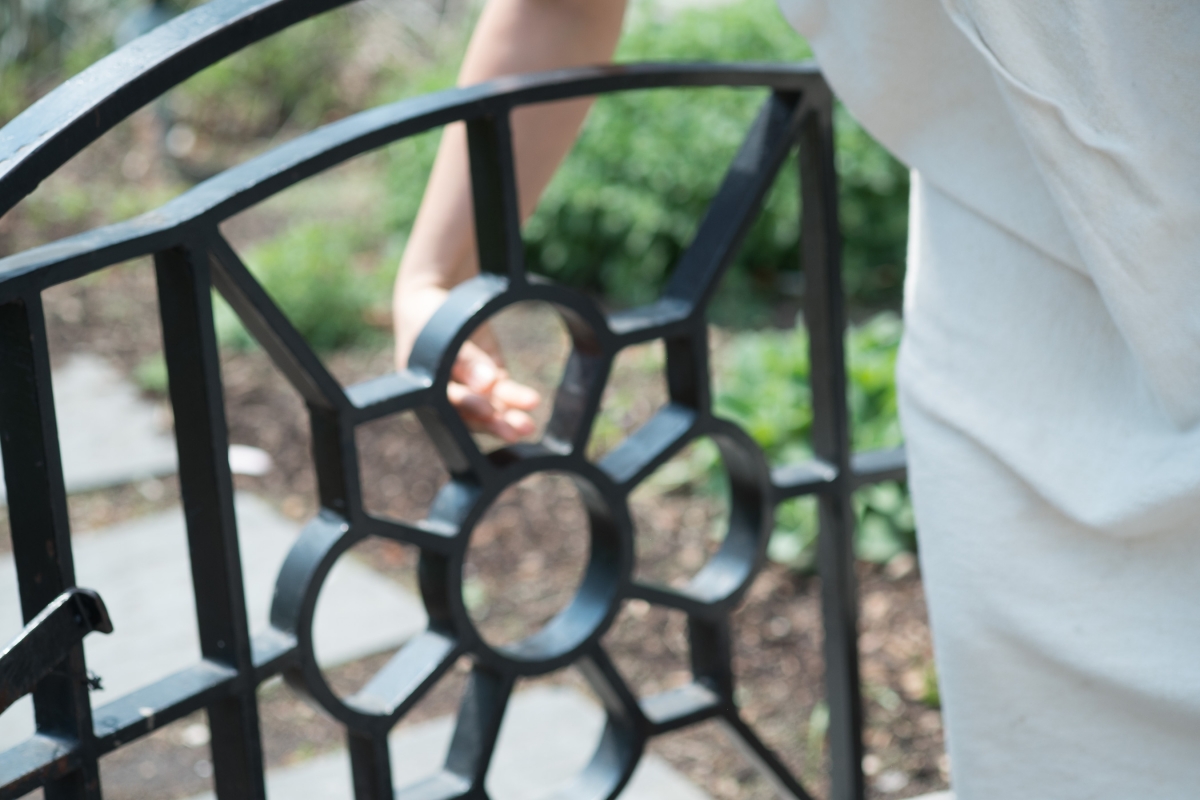
I captured this moment outside the boundary of clear focus, but perhaps Kokoronis’ hand is just focused enough, certainly more focused than the background, to occupy a liminal space in the photograph’s depth of field. I also do not remember the moment when I took this image, and am unable to reconstruct whether my eye was on my viewfinder composing it, or if I merely pointed the camera in the direction of the gate.
I found these two spaces to be distinct as well, the space of the eye and the space of the hand augmented by my camera’s autofocus function, and over time, I was able to negotiate between them such that the composition of my photographs themselves documented this liminality. It would be a consistent motif of the afternoon and the resulting images from this documentation, as I often had to shoot without the aid of my eye for fear of bumping into something or being run over.
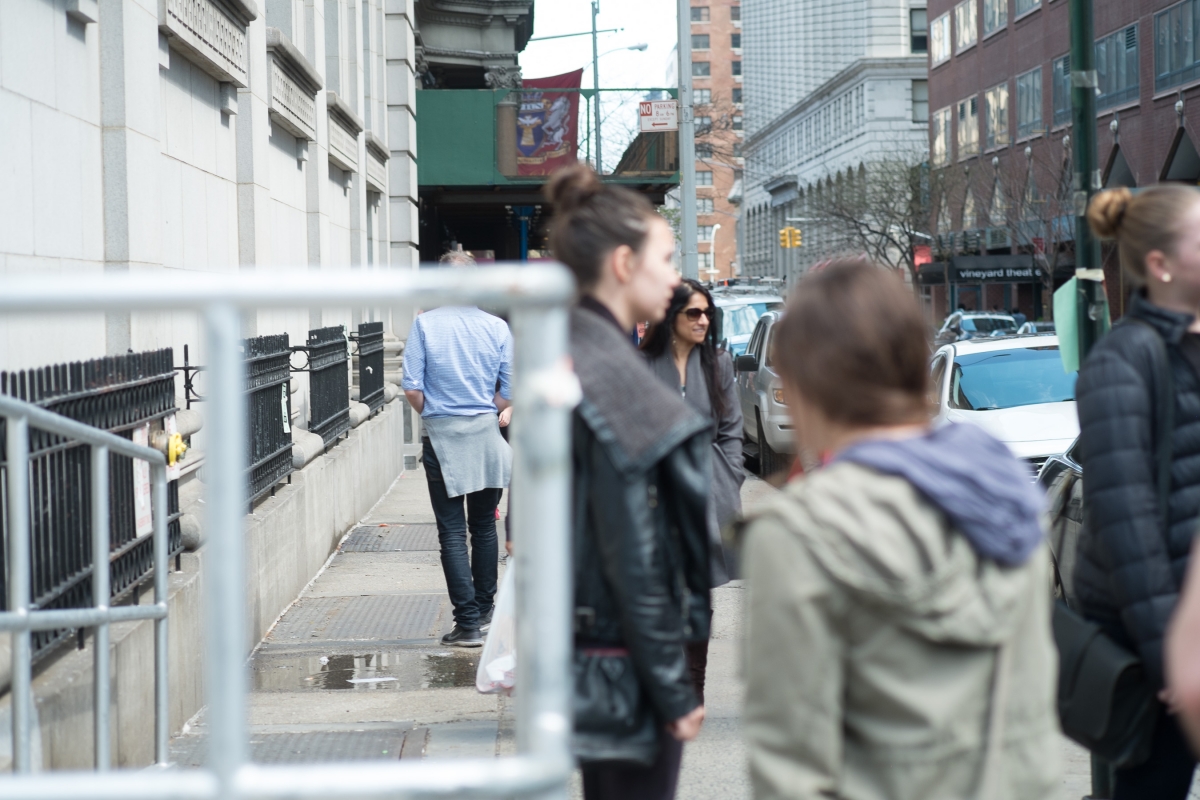
This image seems to have been taken at about eye level and focused on my subject, the landscape architect David Hays, though a railing seems to be obstructing my view of his head. Was this something that I saw through my viewfinder or was I in the mode of shooting without seeing that I clicked the shutter without looking even though I could have? And is David really the proper subject of this image given that we don’t see his head? There is a stranger’s face that seems to be in focus, yet compositionally one might argue that the obstructions and the out of focus elements in the foreground of the photograph constitute more of its subject. Liminality, so elusive at the start of this workshop, seems to be everywhere.
During the course of the afternoon, two groups first explored liminal spaces in Union Square Park and along the streets towards Madison Square Park five blocks up. I followed the first group, which consisted of Hays and the dancer and iLAND Director Jennifer Monson, during the initial phase of the workshop as they negotiated various barriers, fixed and mutable, natural and man-made, such as when I caught the two holding hands in the liminal space between the bike path and the sidewalk, as a skateboarder in a liminal position himself was passing them:
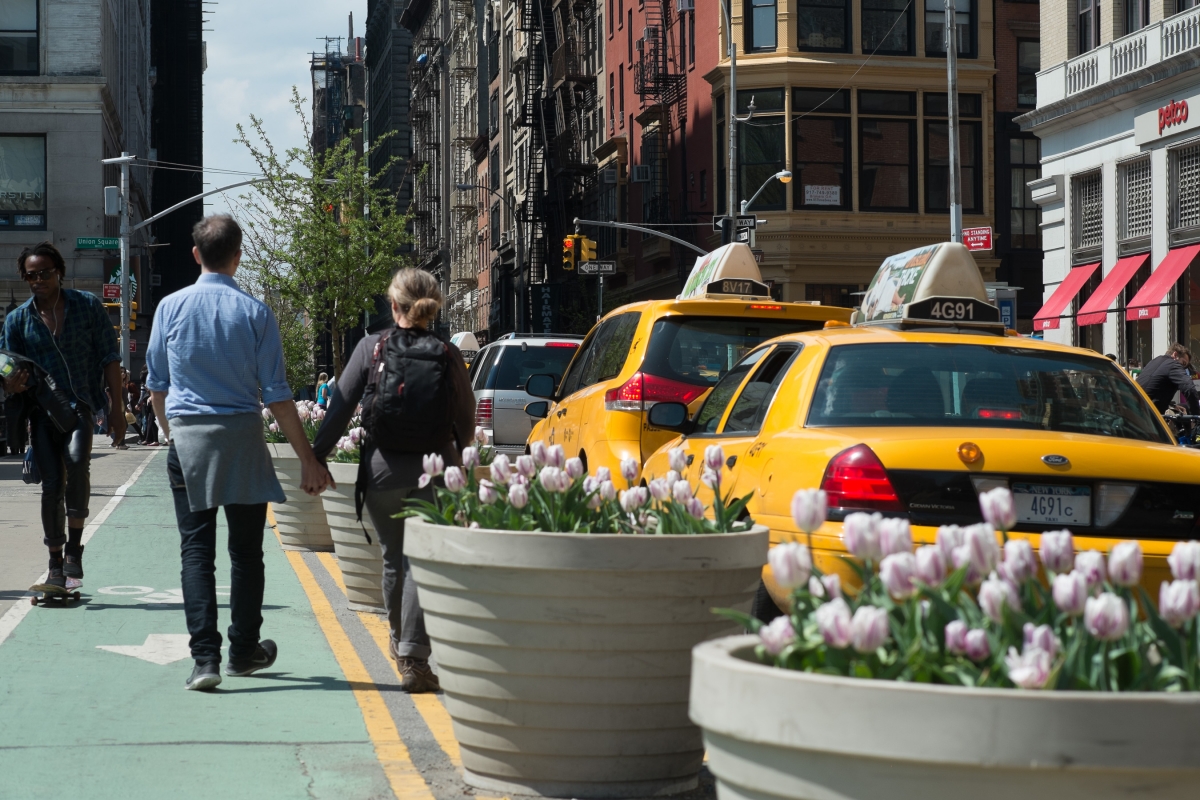
Their explorations made for endlessly fascinating moments of internal composition, yet form in its endless permutations kept moving me, especially when moments of formal intricacy caught me by surprise as I looked through these photographs:
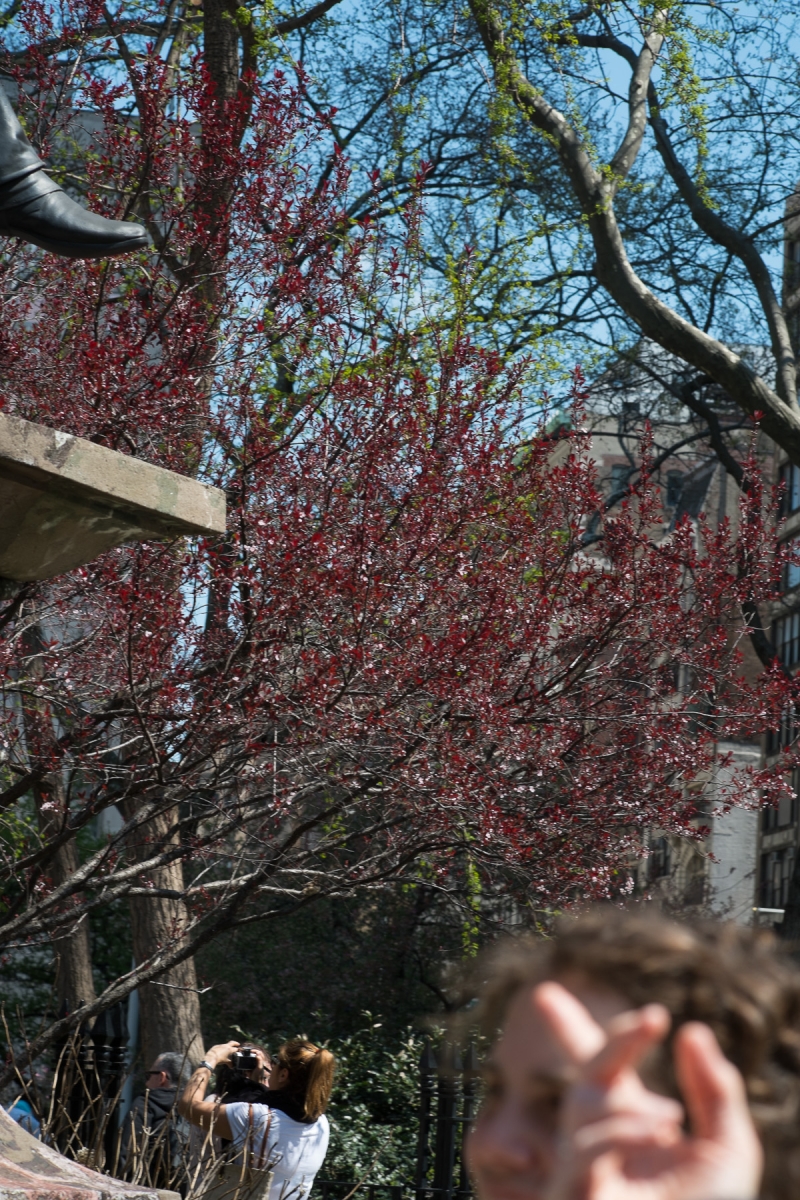
Here’s a picture. Of what? An out-of focus hand? A foot? Or is the picture in the space where both the hand and the foot seem to be gesturing, a space whose boundary seems to be in the background, though it really isn’t the subject of the picture. It seems as though the subject of the picture is invisible, constructed by the interaction between my camera and my casual shutter-clicking (because I doubt that I could ever deliberately compose a picture like this). The invisibility exists between an interior constructed by the finger and an exterior constructed by the statue’s foot, or possibly the other way around. In whichever direction, this comes closest among my images to a picture of liminal space.
The second part of the workshop involved going back to three places and spending time there to map the appearance, disappearance, and reappearance of liminal spaces over time. I followed the second group this time consisting of Kokoronis, Mithal, and a woman I only knew as Kate. I found myself mapping my own space as I observed them, specifically the space of their interaction with each other. This resulted in me taking serial photographs as they interacted. In this series, I became curious about how Kokoronis’ animation made her the focal point of interaction, and moments when the space she occupied became more and less expansive:
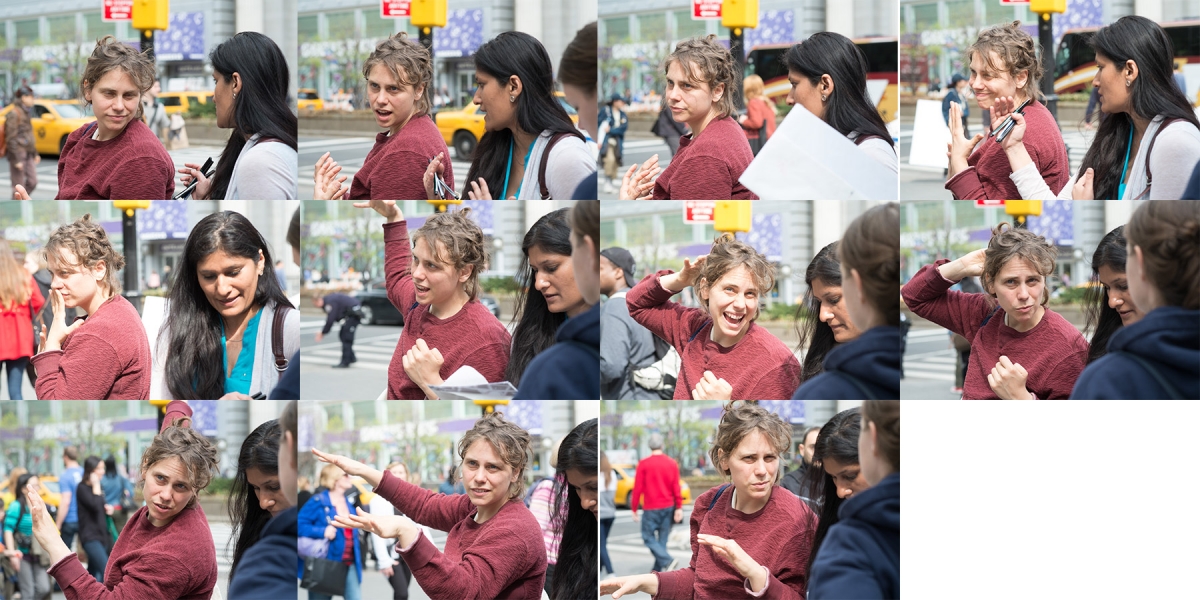
It was curious to me that while Kokoronis in this series of images seems to be in mid-explanation, Mithal can also be seen interacting with Kate and shuffling through her map, which shows a certain fluidity in how the interior and exterior spaces of interaction between them are constructed. This made it quite difficult for me as an editor to decide which images to include in this set and which not to include, and I ended up including them all.
Given the difficulty in pinpointing liminal spaces within the photograph, it occurred to me that the same can be said for the photo editing process itself. Photographers are trained to choose the one image that captures whatever it is that an event or a brand or an idea is supposed to represent. But how can you capture something that must in itself resist being at the center, or inside, or clearly outside. Rather than take this approach of careful curation, I decided to include as many photographs as I can within the limitations of the medium I gave myself. In this case, that happens to be Issuu, which limits its documents to 500 pages, and I’ve edited about 800 images down to that many. It concerns me that I’ve eliminated emblematically liminal ones, but I hope that enough of them are in the final set to convey the idea that centrality is not the focus of these pictures unlike in typical documentation.
Finally, I invite readers to think of the liminal within the virtual spaces of this virtual book, currently in draft form. Maybe it can be found in the turns of the page, in the boundaries between pictures and non-pictures. Maybe you too can engage, as I did, with the practice of trying to capture the invisible.
http://www.issuu.com/meredithramireztalusan/docs/liminalspaces-forissuu?e=9700510/7706204



